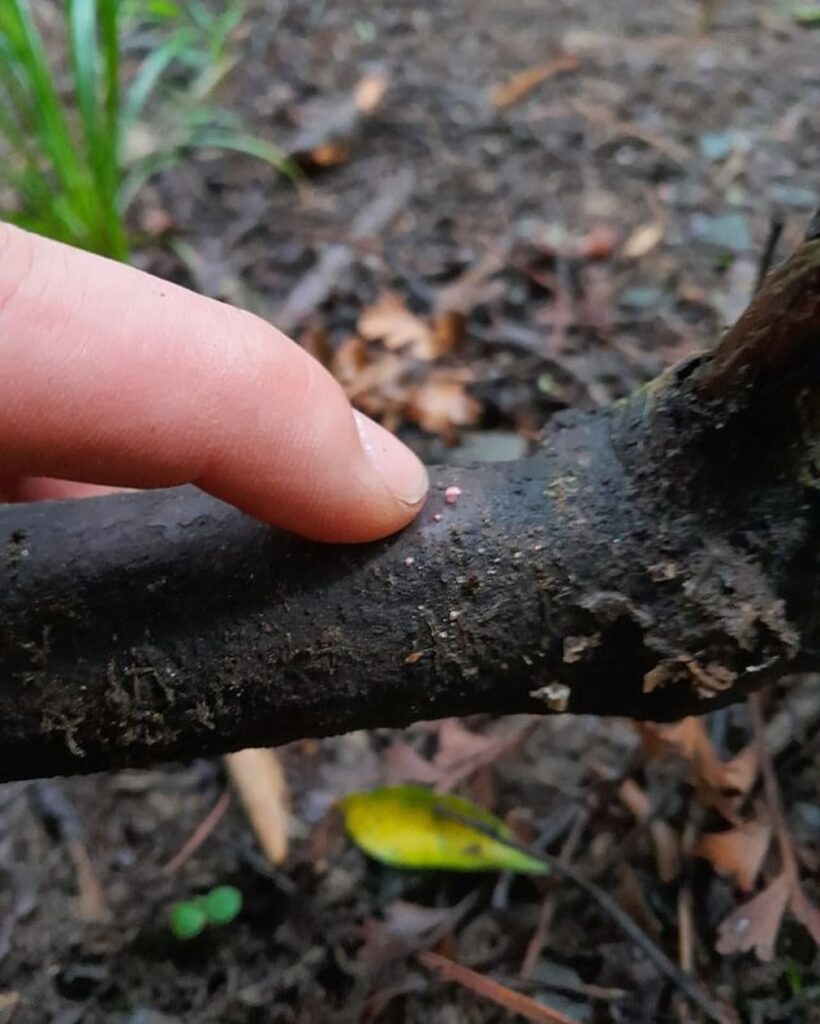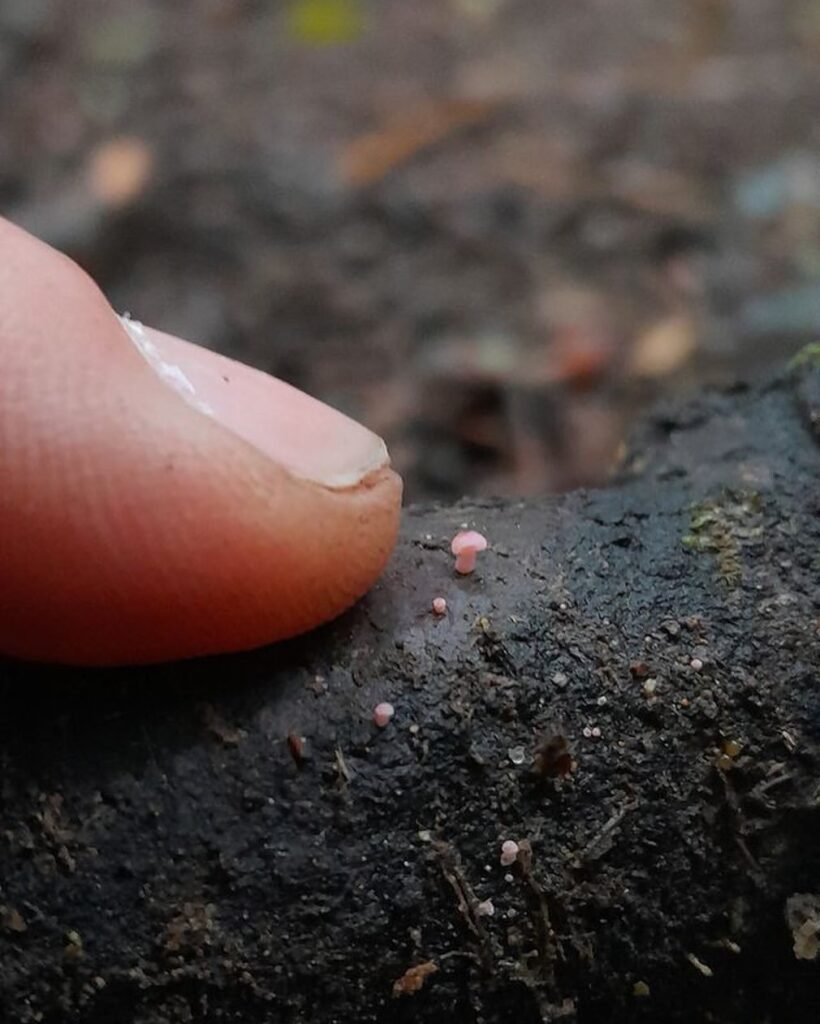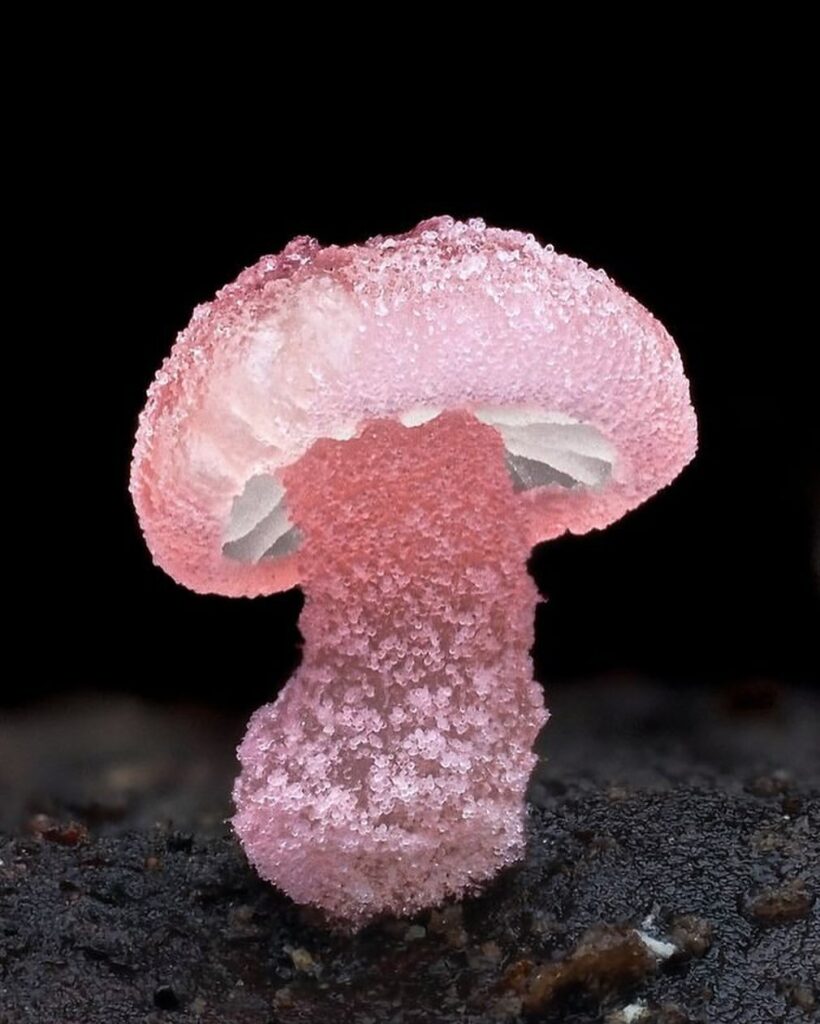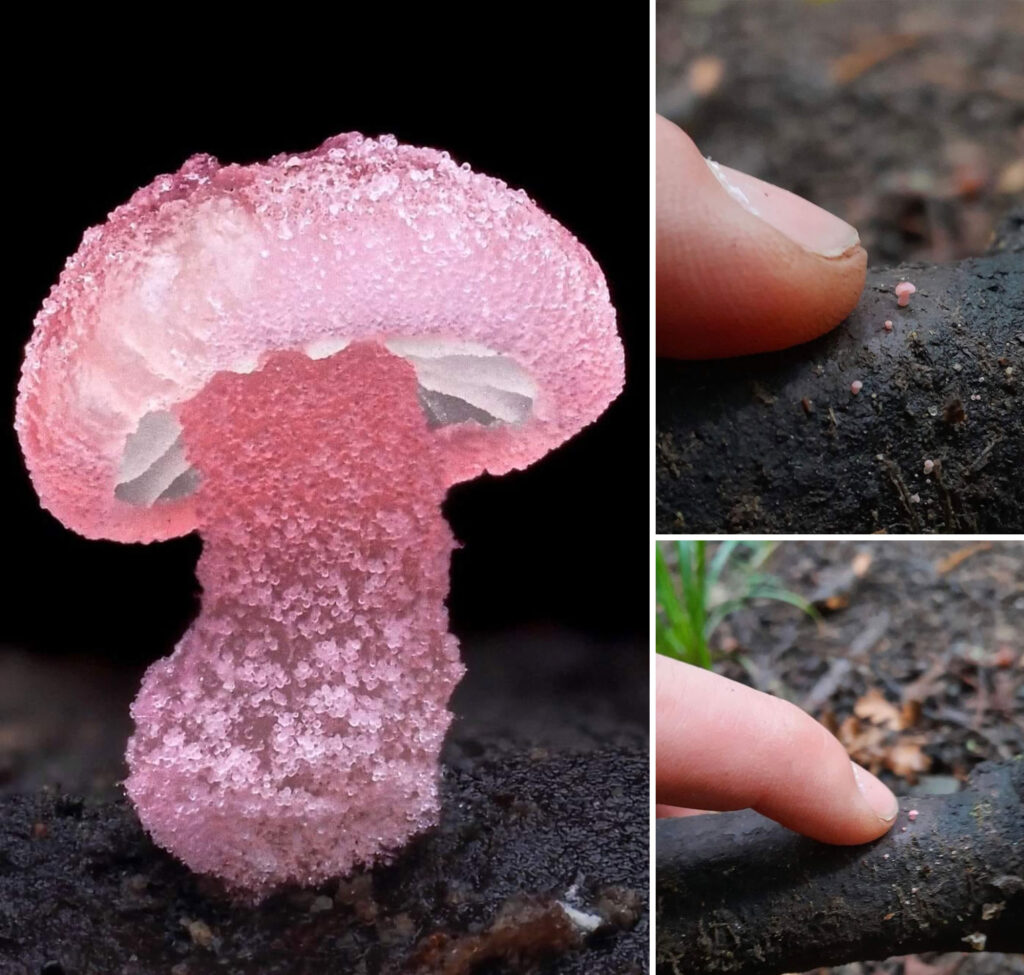
Mycena roseoflava is a tiny yet captivating mushroom native to New Zealand. With caps that measure only 5-10 millimeters in width, this mushroom is remarkable for its delicate appearance. The caps start off in a soft pink hue and gradually shift to a yellowish color as they mature.

These mushrooms have a smooth to slightly fuzzy texture, enhancing their delicate and fragile look. They thrive in damp environments, particularly in wetter forests and rainforests, where they can be spotted growing on rotting wood and twigs.

One of the most fascinating features of Mycena roseoflava is its bioluminescence. Discovered in 2021, this glowing ability is due to a chemical reaction involving enzymes and a substance called luciferin, akin to the way fireflies emit light. This natural glow transforms the forest floor into a magical, illuminated spectacle at night.

As a decomposer, Mycena roseoflava plays a crucial role in recycling nutrients back into the ecosystem by breaking down dead organic matter. This vital process helps maintain the health and balance of its habitat.

First described in 1964 by New Zealand scientist Greta Stevenson, Mycena roseoflava continues to intrigue both scientists and nature enthusiasts with its unique glow and ecological importance.

Leave a Reply